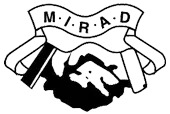Transfers Reg Help
Reg Plate Transfers - Transfer Your RegReg PlateTransfers - Transfer Your Reg To Your Car Correctly
Using a DVLA Registered company such as Reg Plates will ensure the Reg Plate Transfer of your personalised number plate will run smoothly.
The popularity of personal number plates as exploded rapidly recently. Motorists are generally deciding to alter their regular DVLA registration details with their personal personalised plates. Typically the current transfer scheme through the DVLA enables owners of cars with a private registration number to transfer them through car to car, motorcycle or other vehicle or onto a Retention Certificate to hold the transfer reg until such time as a new vehicle is ready to receive the registration.
It’s helpful for motorists that are selling their vehicle and look to transfer their personal reg plate transfers to their brand new car at a later date.
Transfer purposes need to be made to the DVLA by post or using the online retention & assignment system. The V317 form needs to be completed and they are obtainable through the DVLA as well as through Reg Plates. Through the transfer the vehicle giving up the registration range is known as the donor vehicle and also the receiving vehicle is called the recipient.
Vehicles need to be in existence as well as reg plate transfers system along with the DVLA for you to partake in the transfer system. Vehicles active in the transfer need to be taxed, keep a valid MOT (if applicable) and be readily available for examination or inspection.
Other Reg Plate Transfers Rules To Keep In Mind
Adding a nominee or taxing your vehicle when you assign the number.
You can add a nominee when assining the registration number by:
- completeing section 2 of the V750 or V778
If you need to tax the vehicle at the same time you will need:
- a completed V10 'application for a tax disc'
- a certificate of insurance or a valid cover note for the vehicle.
- a cheque for the correct vehicle tax
Renewing or updating your V750/V778
If you don't assign your number to a vehicle and the certificate of entitlement is about to run out you will receive a reminder from us. You can renew it for up to 10 years - otherwise you will lose the right to assign it to your vehicle.
| Service | Fee |
| Renew your V750/V778 for 10 years | FREE |
| Add or change nominee | FREE |
| Change details or replace lost or stolen certificate | FREE |
Transfering a registration number
You can transfer your registration:
- from your vehicle to another one in your name.
- to a vehicle you're buying.
- to someone else's vehicle.
You can't transfer a registration number:
- starting with 'Q' or 'NIQ' for Northern Ireland registered vehicles
- if it will make the vehicle it's being transfered to look younger.
Applications need to include the registration document (V5/V5C) for your donor and having vehicles and also the MOT test certificate currently in place. With regard to vehicles with only the green fresh owners section, the V62 form also needs to be completed.
Typically the cherished transfer scheme is not available for vehicles which in turn do not require testing for example tractors as well as milk floats. Typically the transfer charge is now £80 payable through cheque, cash as well as debit cards.
Upon finishing the transfer method, each vehicle is given with an up-to-dateV5C displaying the newest registration as well as an up-to-date MOT when appropriate. The modern V5C documents are iussued directly through DVLA Swansea. Typically the donor vehicle is given with an age related reg plate transfers ranged number plate as a replacement, usually the original registration this gave up because of the initial move. Cars registered just before 1963 usually are issued a dateless number plate that is issued on the non transferable basis..
The meteoric rise in popularity of personal number reg plate transfers plates keeps growing and sales of both British and Irish number plates are increasing year on year. A lot more people are today looking at Irish number plates picking out a new registration of popular and well-liked names as well as initial combinations through the UK number plate sequence become progressively scarce.
Irish number plates are car registrations which originate within Northern Ireland. These number plates follow a file format displaying Three letters accompanied by up to Four figures. Typically the registration ALZ 3214 is a format of Irish number plate. Irish number plates vary from all their DVLA alternative by showing the letter characters I or Z inside the registration. The addition of them creates a lot more combinations compared to DVLA number reg plate transfers plates are not able to provide for example WIL, GIL, BIL as well as CAZ registration system number plates. Some other combinations for example BIG as well as DIG can be found and are very popular with plant businesses as well as landscape home gardeners.
Costs regarding Irish number plates may be considerably lower than UK vehicle registrations and several cheap range plates can be found. You can purchase Irish number plates for less than £100 as well as name number plates for example CAZ begin at close to £400. Costs increase along with lower or even neater figures along with number 1 reg plate transfers system plates offer great value. The highest priced Irish number plate ever before marketed that was WIL 1 at £50000. Since then Roman Abramovich, billionaire tycoon as well as proprietor of Chelsea FC paid for £285000 for the personalised reg VIP 1, another Irish number plate, that at that time was the priciest number plate actually sold in the United Kingdom.

Transferring a Number Plate onto a New Vehicle
The transfer of your purchased personalised number plate to a brand new car is usually a simple process. You will need to supply RegPlates.com with a V55 form supplied by your garage, plus an insurance certificate and cheque payable to the Department of Transport for road tax and an £80 transfer fee.
Transfer time can be unpredictable so it may be best to ensure there is a year related plate assigned by the garage supplying the vehicle. This solution will ensure you full use of the vehicle whilst the transfer is taking place.

Transfer a Vehicle Registration to Your New Car
Transferring a vehicle mark from your old car to a new one is relatively simple and there are no time restrictions involved and can be organised by yourself.

Registration Transfer following a "write off"
When insurers decide that a car is a 'write off' it can complicate matters for vehicles bearing a private plate, because if the claim is settled and the insurers sell the vehicle as salvage before the number is transferred you will lose your entitlement to it.
In the event of a write off, the vehicle must be made available for inspection by governing bodies in order for you to retain the number for it to be transferred to another vehicle.

Transfer Plates When Your Car Is To Be Scrapped
When a car is 'scrapped' it effectively ceases to exist and its registration number is cancelled, meaning that it cannot be transferred. Whoever is responsible for the destruction of the vehicle must inform the governing bodies and return the V5 documentation.
In order to ensure that you retain the rights to your cherished number plate, you can make a direct application to the DVLA, but this process can be long winded. Being a member of MIRAD & APRT RegPlates.com has the proven experience to handle this entire process for you.
Choosing RegPlates.com
If you choose to use RegPlates.com to handle the transfer, then you have the benefit of over twenty years’ experience and also the peace of mind that dealing with a reputable firm provides.
As members of The Association of Personalised Registration Traders, we adhere to the association’s code of ethics and are members of the Institute of Registration Agents and Dealers, making us subject to regular supervision by the group – facts we’re proud to share with our customers.
Let us help you to keep hold of your valued registration plates and contact us today.
If you are looking for a name related number plate, we have a section displaying some great plates offered from our own stock which have the added benefit of fast transfers available. These registrations can be on your vehicle within 3 working days.
Regplates have an exclusive number plate page which shows some examples of quirky and unusual registrations available for sale.
These number plates show how versatile a plate can be, for use as a business marketing tool on a works vehicle or as a perfect way to finish off the look of your prized car or motorbike.
The number plate transfer procedure can be tricky, government departments and multiple forms are involved. This is why at Regplates.com we provide a full transfer service which is completely free of charge to our customers. This ensures the process is followed correctly and your personalised number plate transfer is concluded as quickly as possible allowing you to get your plates on your car.
Sales Team Helpline - 01482 627 628 - open 9am until 7pm

Our customer satisfaction is the most important thing to us. We offer a fair, honest ad open policy and will do our upmost to ensure you are happy and feel you have been well looked after.
Although we have sold number plates to many celebrities, the star treatment is not just applied to them. Every customer is important to us at RegPlates.com and we are proud of our good name within the industry.
Southen Ireland Reg Plate Transfers
From 1903, the system used in Ireland was part of the original British system of identifiers. This was superseded in the Republic of Ireland on 1 January 1987.
A two-letter code containing the letter I was allocated to each administrative county in alphabetical order (the full list appears below), with the initial registration format being the code followed by a sequence number from 1 to 9999, as in Great Britain. The codes allocated ran from IA to IZ, then from AI to WI, with the letters G, S, and V skipped as these were intended for Scotland. In 1921, shortly before the creation of the Irish Free State, Belfast and Dublin City completed their original marks and thus took the next available codes, XI and YI respectively, with Dublin City then taking ZI in 1927. After this, most other codes with Z as the first letter (again skipping those containing G, S and V) were allocated in alphabetical order, starting with single-letter Z – the only one-letter code used in Ireland – for County Dublin. (This does not include the ZZ code for temporary imports, introduced in 1925.)
In February 1952, a joint motor taxation authority was set up for Dublin City and county, and their codes were merged. Two years later, with all possible codes (at the time) allocated, a new format was introduced with a serial letter added before the code, and the sequence number running only to 999 (thus limiting the number of characters on a number plate to six). The Dublin joint authority was the first to adopt this format when it issued ARI 1 in May 1954, and each county followed suit once all its two-letter combinations had been issued. In the case of counties with more than one code, all the three-letter marks for the first allocated code would be issued, then all such marks for the second code, and so on (see the lists of series per county below).
G, S and V were not used as serial letters at first, while Z was not used before a code starting with that letter, so as to prevent any clashing with ZZ temporary registrations. Several other three-letter marks were not issued through oversight or because they were deemed offensive, and the single-letter Z code was left out of this format as a serial letter would have created a duplicate of an existing two-letter code, particularly one used in Northern Ireland.
Initially, all number plates had been black with white or silver characters, but in 1969 the option of black-on-white at the front and black-on-red at the rear was introduced.
In February 1970, the Dublin joint authority exhausted all its three-letter combinations and thus began issuing "reversed" registrations, starting with the original two-letter codes (plus single-letter Z) in order of allocation. These were followed from July 1974 onwards by the three-letter marks (1 ARI etc.), issued in the same manner as for the forward versions. Again, other counties followed this example over time. Also in 1974, Cork followed Dublin's example of setting up a joint motor taxation authority for city and county, though their codes were not merged until August 1985.
In 1982, with Dublin and several other counties having exhausted all possible combinations of their original codes, it was decided to allocate the skipped codes containing G, S and V to these counties. In the cases of these codes, the forward three-letter combinations were issued first in the same manner as before, followed by the forward two-letter combinations.
Under this system, Irish vehicle registration marks could be transferred to Britain for re-registration on other vehicles, even after Irish independence, and even though they could not be re-used within Ireland. The letter I in many combinations made these attractive for collectors, and indeed the Kilkenny issue VIP 1 has fetched a record price at auction. Since the introduction of the current system in 1987, such exports have been impossible, even for old-format registrations, although those already exported may still be re-transferred.
The 1987 system allocated single-letter codes to the county boroughs (including those shared with counties) and two-letter codes to the other counties. Normally these are the initial and final letter of the English-language name of the county (except where duplicates would result). Initially, all plates under this system consisted solely of black characters on white, but in 1991 the blue EU identifier and the Irish-language name of the county were added, the latter as a result of the controversy arising from using English as the basis.
Vehicles first registered before 1987 are allowed to be re-registered using the current system, with a year number preceding 87 – for instance, a vehicle from 1964 re-registered in Meath would have 64-MH at the start of its registration.
In 2013, the year was changed to a 3-digit year with the third digit being 1 for January to June and 2 for July to December, for example, 131 for January–June 2013 and 132 for July–December 2013. The decision to change the year was based partly on superstition about an unlucky '13' registration, but also to boost sales in the second half of the year.
Regplates have embraced the social network revolution and have a number plate news blog which can be viewed here Cherished Numbers News Blog.
This is updated frequently with private registration news from around the world. Reg Plates also have a facebook fan page with pictures of a selection of our reg number clients.
Our new Ipod and Ipad number plate app is now available. You can click on the icon below or search for 'Regplates' on the App Store. We also have a personalised number plate Android app which can be downloaded to your smartphone by clicking the icon below or searching for 'Regplates' on the Android Marketplace.
Our private number plate twitter feed has many unique special number plate articles and offers to sell and buy cherished car reg plates.
Regplates have a you tube channel with lots of helpful videos showing how to buy and fit personalised number plates. The cherished number people also have ensured this site is a mobile device enhanced site which makes browsing easier and faster.


- FREE TRANSFER SERVICE - your paperwork is handled by our trained team
- OVER 30 YEARS EXPERTISE - long established and trusted company
- DVLA RECOGNISED RESELLER - linked directly from the DVLA website
- TRADE ASSOCIATION MEMBERS - MIRAD and CN Guild members



